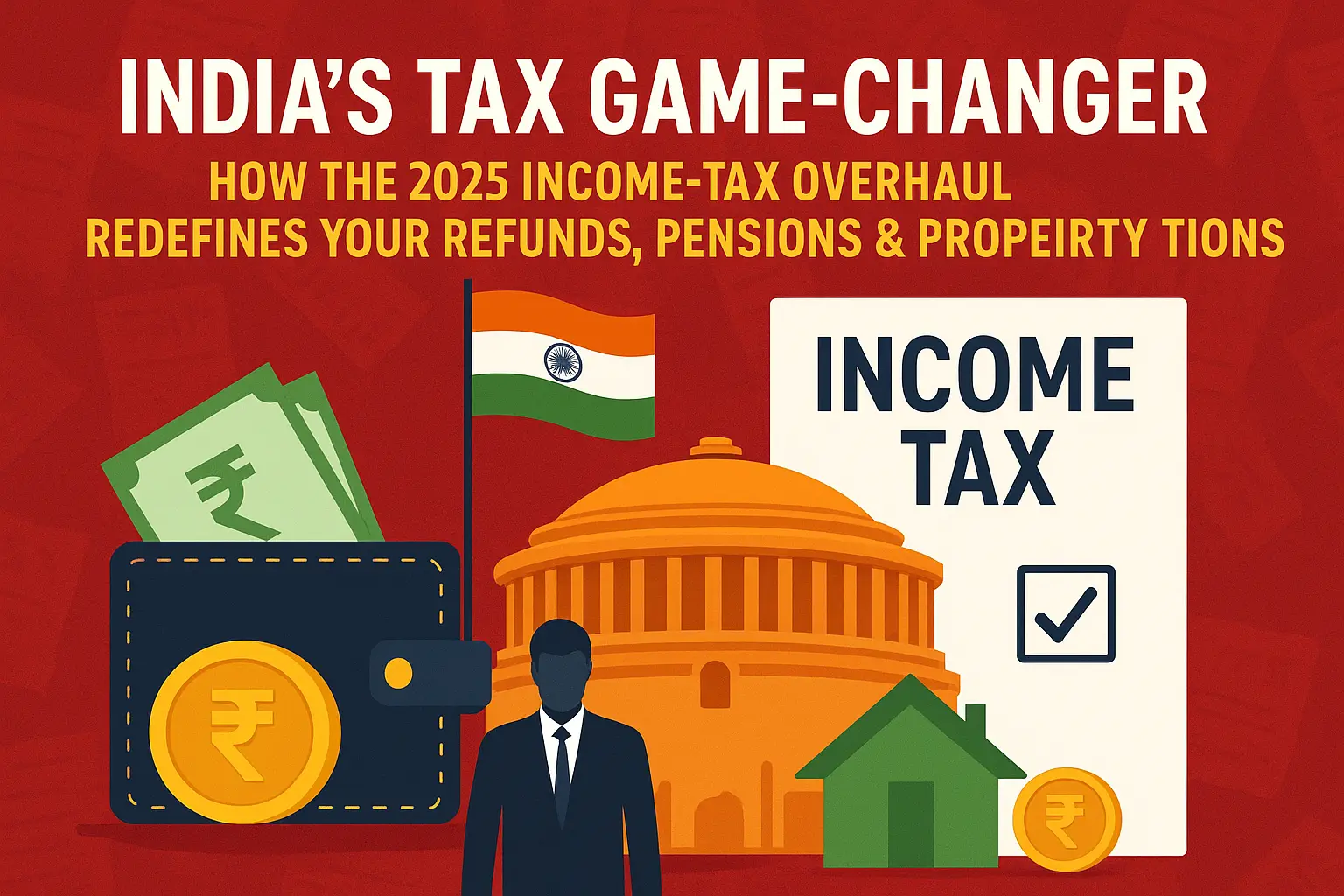The Lok Sabha passed the Income-Tax (No.2) Bill, 2025 — a major rewrite of the 1961 Act aimed at simplification, clearer rules on pensions and house property, faster refunds and fewer disputes. This explainer breaks down practical impacts, timelines, and the angles missing from media reports.
Table of Contents
ToggleIndia delivers a major income-tax overhaul after decades-long law revamp
On August 11, 2025, India’s Lok Sabha passed a sweeping revision of the nation’s income-tax law, replacing the 1961 Act with a fresh Income-Tax (No.2) Bill, 2025. This is not just a minor amendment—it’s a structured rewrite designed to simplify the tax code, ease compliance, and immediately benefit individuals, pensioners, landlords and businesses.
What’s changing—and why taxpayers should care
Officials promise the new law is S.I.M.P.L.E.—Streamlined, Integrated, Minimize litigation, Practical, Learnable, Efficient. In practice, this means clear language, fewer ambiguous terms, and tables that directly guide TDS, salary slabs, and presumptive taxation. No more obscure legal jargon—just clarity.
The new Income-Tax Bill brings several big reliefs for taxpayers. Now, even if you file your return after the deadline, you can still get your refund. Retirees get a clear tax break on commuted pensions from approved pension funds, removing earlier confusion. For property owners, the rules are simpler — a flat 30% deduction on income from house property, plus easier guidelines for calculating interest and handling vacant property. Businesses also benefit, with the return of dividend deduction provisions, and foreign sovereign funds now have clear, stable tax rules.
At a glance: key provisions table
| Area | Previous Situation | New Law Changes |
|---|---|---|
| Refunds | Denied if return filed late | Refund allowed even after deadline |
| Commuted Pensions | Ambiguous deductions | Explicit allowances from specified pension funds |
| House Property | Complex interest & vacancy rules | Flat 30% deduction + simpler computation |
| TDS Compliance | Penalties even for late filing | More lenient in many cases |
| Dividends (Corporate) | Limited inter-company deduction | Reinstated Section-80M-like reliefs |
| Foreign Investment | Uncertain tax treatment | Clarified status for sovereign wealth and pension funds |
Beyond the headlines: less-covered, high-value angles
While media spotlighted immediate changes, several deeper aspects remain under-discussed:
- Mapping the changes: A side-by-side section mapping—showing which old sections stay, merge, or vanish—would be invaluable for both professionals and the public.
- Compliance cost impact: How will small accounting firms or CA/software providers adapt? What is the expected time and financial investment for compliance updates?
- State-level interplay: With the introduction of a “tax year” concept replacing assessment/fiscal years, how will this sync with state tax administration or property taxes?
- Taxpayer rollout roadmap: A step-by-step checklist guiding filers from now until April 2026—what to prepare, forms to watch for, documents to collect.
- Litigation hotspots: Despite simplification, areas like “beneficial owner” and cross-border dividends remain prone to disputes—professionals could benefit from risk-prevention guidance.
Why this law matters now — and fast
This overhaul is rare and sweeping—replacing over six decades of layered amendments. It delivers practical relief to millions: retired individuals, salaried taxpayers, landlords, MSMEs, and global investors. And critically, it arrives when digital filing and cash flows matter more than ever—especially as pandemic-era TDS and return backlogs fade.
Official Sources:
Income-tax Bill, 2025 — Indian Income Tax Department website













